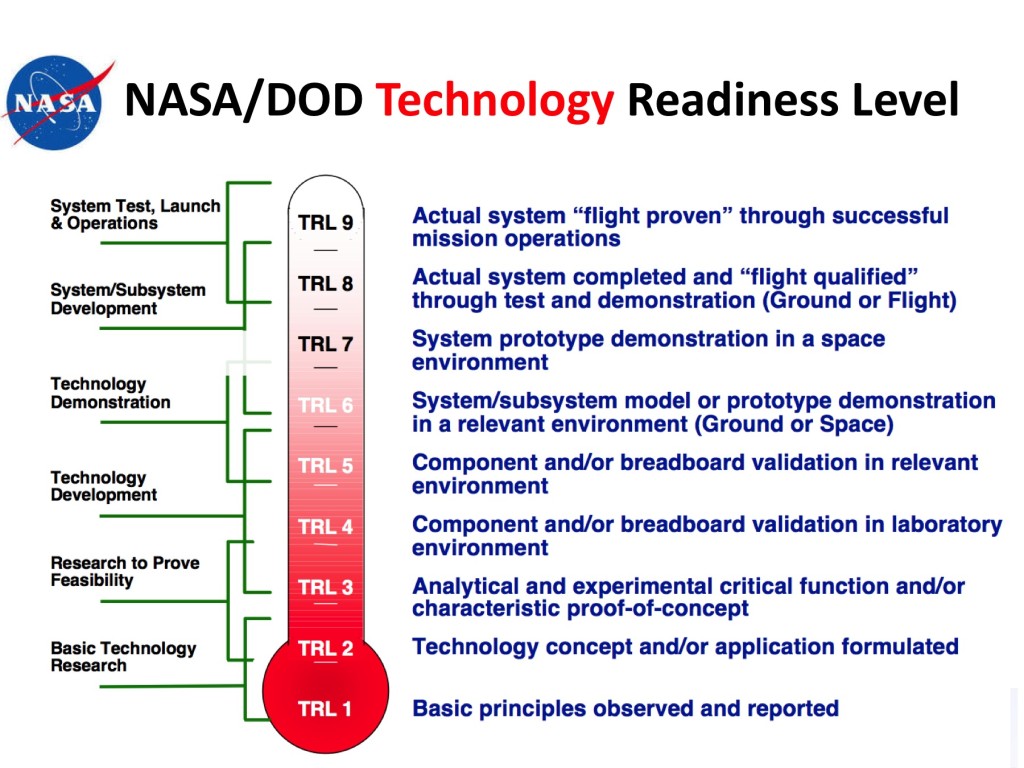NASA’s approach to pioneering is embodied in a set of guiding principles that will increase our successes and benefits over the coming decades. These key principles are the basis for a sustainable, affordable space program and provide overarching guidance to ensure NASA’s investments efficiently and effectively enable the journey to Mars. These principles are:
Strategic Principles for Space Exploration
– Implementable in the near term with the buying power of current budgets and in the longer term with budgets commensurate with economic growth
– Exploration enables science and science enables exploration, leveraging scientific expertise for human exploration of the solar system
– Application of high Technology Readiness Level (TRL) technologies for near-term missions, while focusing sustained investments on technologies and capabilities to address challenges of future missions

NASA/DOD Technology Readiness Level Chart
– Near-term mission opportunities with a defined cadence of compelling and integrated human and robotic missions, providing for an incremental buildup of capabilities for more complex missions over time
– Opportunities for U.S. commercial business to further enhance the experience and business base
– Resilient architecture featuring multi-use, evolvable space infrastructure, minimizing unique major developments, with each mission leaving something behind to support subsequent missions
– Substantial new international and commercial partnerships, leveraging current International Space Station partnerships and building new cooperative ventures for exploration
These principles are integrated throughout NASA’s strategy and are exemplified in current plans and activities. This document highlights a few example applications of these principles, as indicated in relevant sections by the icons above.